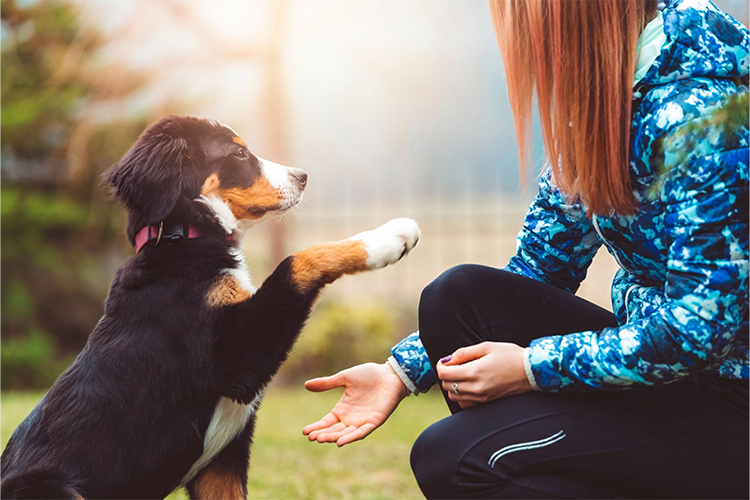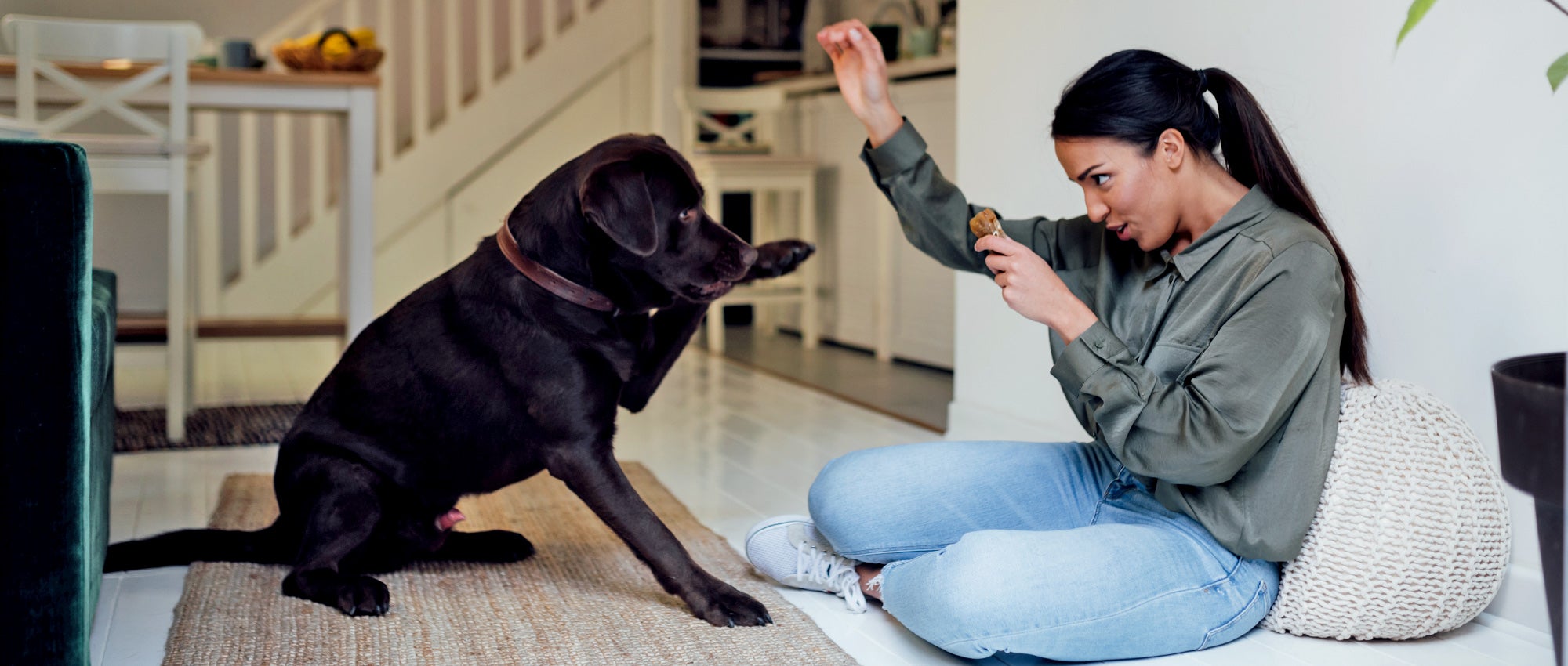Understanding Dog Body Movement Throughout Dog Training
Understanding Dog Body Movement Throughout Dog Training
Blog Article
Important Tips for Successful Dog Training: A Guide for Animal Owners
Effective pet dog training is a diverse procedure that needs a calculated strategy tailored to both the animal's temperament and the proprietor's goals. Understanding just how to navigate these challenges can considerably enhance the training experience, inevitably transforming the partnership between owner and dog.
Comprehending Canine Behavior
Understanding canine habits is essential for effective training and cultivating a harmonious connection between canines and their owners. dog training. Pet dogs connect mostly with body language, vocalizations, and actions, making it vital for proprietors to analyze these signals properly.

Socializing plays a considerable function in dog behavior; exposure to various settings, individuals, and other animals can considerably impact a dog's temperament. Aspects such as breed characteristics and specific personality should guide training methods, as some breeds may have particular behavior traits that necessitate customized techniques. By recognizing these aspects, proprietors can produce a supportive setting that motivates positive habits, causing effective training end results and a deeper bond with their pet dogs.
Developing Consistent Commands
Reliable communication with your dog starts with establishing regular commands. This fundamental element of training is crucial for promoting understanding between you and your pet dog. Uniformity in the commands you make use of makes sure that your dog can reliably connect particular words or expressions with the desired actions.
When choosing commands, pick clear, distinct words that are very easy to separate and state from one an additional. Avoid utilizing similar-sounding commands that might confuse your pet. As an example, making use of "rest" and "stay" is proper, however "rest" and "hit" might lead to misunderstandings.
In addition, maintain the same tone and volume for each and every command. Canines are delicate to singing signs, so varying your tone can develop complication.
It is similarly essential to guarantee that all member of the family get on the very same web page regarding the commands used. A united front in command usage will prevent mixed signals and strengthen the learning procedure.
Favorable Reinforcement Strategies
The power of favorable support in canine training hinges on its capability to encourage preferred actions with rewards and appreciation. This method is based in the concept that habits followed by favorable end results are most likely to be repeated. By including positive support into your training regimen, you can successfully shape your canine's behavior in a useful manner.
To implement favorable reinforcement, it's necessary to determine what motivates your canine, whether it be deals with, toys, or spoken praise. When your pet executes a preferred action, such as remaining on command, promptly reward them with a treat or love. This association in between the command and the positive end result strengthens their understanding.
It's vital to timing the rewards appropriately; delivering the reinforcement within secs of the wanted behavior assists your dog make the connection (dog training). Furthermore, uniformity is vital-- make certain that all relative make use of the same commands and reward systems to prevent complication

Gradually, you can lower the regularity of deals with as try this out your canine discovers the habits, transitioning to praise or intermittent benefits. This method not just fosters a strong bond between you and your dog yet also promotes a positive learning atmosphere, making educating a satisfying experience for both.
Socialization and Interaction
Regularly revealing your pet to a selection of atmospheres, individuals, and various other pets is crucial for their social development. Socialization ought to begin early, preferably during the important home window of 3 to 14 weeks, when pups are most responsive to brand-new experiences. Nevertheless, older canines can likewise Website benefit from ongoing socialization efforts.
Present your pet dog to different settings, such as parks, pet-friendly stores, and urban locations. This exposure assists them adjust to different stimulations, decreasing anxiousness and fear reactions. Encourage favorable communications with other dogs and individuals, ensuring that these experiences are secure and controlled to foster confidence.
Make use of organized playdates with courteous pet dogs, as this can enhance your dog's social skills and teach them proper behavior. Obedience courses and training sessions additionally provide exceptional possibilities for socializing, allowing your dog to interact with others in a supervised atmosphere.
Display your dog's body movement during communications, as this will assist you gauge their convenience level. Slowly raise direct exposure to more difficult scenarios while ensuring that each experience declares. A well-socialized canine is more probable to show balanced habits, making them a joy to have in any kind of setting.
Resolving Usual Training Challenges
Every pet dog proprietor will run into training challenges eventually, no matter their dog's age or socializing level. Determining usual issues such as stubbornness, diversions, and terror can aid in developing efficient methods for renovation.

Gradually present disturbances as the pet becomes a lot more efficient in commands. Short, constant training sessions are likewise efficient in maintaining focus.
Fearfulness can hinder a dog's learning procedure. Progressive desensitization to the source of concern, matched with favorable reinforcement, can assist reduce stress and anxiety. Perseverance is vital; never ever require a canine right into a scenario that creates distress, as this may exacerbate the concern.
Eventually, understanding and attending to these common difficulties with a structured approach will certainly promote a more efficient training experience, strengthening the bond between canine and owner while advertising effective learning.
Final Thought
In summary, effective dog training counts on a detailed understanding of canine behavior, the facility of constant commands, and the application of favorable support methods. Socializing plays a crucial function in developing well-adjusted animals, while dealing with usual training challenges calls for patience and versatility. By implementing these essential approaches, animal proprietors can foster a strong bond with their pets and advertise preferable habits, ultimately resulting in an unified relationship in between people and their canine friends.
Comprehending pet behavior is necessary for reliable training and cultivating a harmonious partnership in between canines and their owners.Socializing plays a substantial function in pet dog actions; direct exposure to various atmospheres, individuals, and other pets can significantly impact a pet dog's personality.The power of favorable reinforcement in canine training exists in its ability to motivate desired habits through benefits and praise. By integrating favorable reinforcement right into your training regimen, you can efficiently shape your canine's habits in a constructive way.
In summary, successful canine training depends on a comprehensive understanding of canine behavior, the facility of regular commands, and the application of favorable support strategies.
Report this page